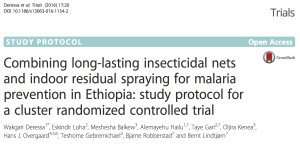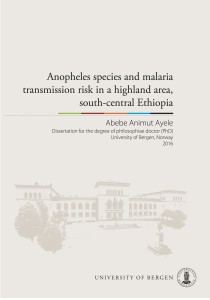Each month, a paper is selected by one of the Editors of the five Nutrition Society Publications (British Journal of Nutrition, Public Health Nutrition, Nutrition Research Reviews, Proceedings of the Nutrition Society and Journal of Nutritional Science). This month, Seifu Hagos Gebreyesus’ paper on ‘Local spatial clustering of stunting and wasting among children under the age of 5 years: implications for intervention strategies’ was selected.
Seifu wrote on The Nutrition Socienty Blog:
As malnutrition is a major public health problem in Ethiopia, we aimed to find out how the acute and chronic forms of undernutrition occur in the districts and kebeles (a kebele is the smallest administrative unit in Ethiopia). Such knowledge could be helpful in improving our understanding of the distribution of undernutrition on a local scale, as well as designing targeted nutrition intervention programmes.
For this purpose, we surveyed children aged less than five years, who were found in 1744 households. We measured children’s height, weight, and the geographic locations (latitudes and longitudes) of households. Using data from 2371 children aged less than five years of age, we evaluated how malnutrition is distributed within a district and kebeles.
Although many believe that undernutrition is equally distributed within an area, we found that children living in locations within a district are more susceptible to undernutrition than children in other locations but living in the same district. For example, children living in these locations were 1.5 times more likely to be stunted and 1.7 times more likely to be severely stunted than children living in other locations within the district. Similarly, in some kebeles, children living in some small areas experience more acute malnutrition (wasting and severe wasting).
Our finding has important implications to nutritional intervention strategies. Stunting and wasting are not equally distributed in an area, suggesting that planning of nutrition interventions may need to consider the variations in the vulnerability.
To help accelerate the reduction of malnutrition, it could be important to consider targeting locations where more susceptible children live. The approach would help reach children who are most likely to benefit from intervention programmes.
We recommend that this research needs to be repeated in other areas of Ethiopia and other developing countries. We also would like to recommend further study possibly using an implementation research approach to evaluate the feasibility, advantages and effectiveness of targeting nutritional interventions.


![Abebe [1]](http://bernt.w.uib.no/files/2016/01/Abebe-1-300x276.jpg) ds on Friday 15 January 2016 his PhD degree at the University of Bergen with a dissertation:
ds on Friday 15 January 2016 his PhD degree at the University of Bergen with a dissertation: